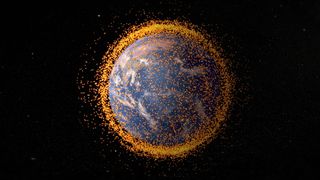Outcast_Searcher wrote:Azothius wrote:Another Black Swan just waiting to hatch...
Two Dead Satellites May Collide Tonight. That's Really, Really Bad.https://www.yahoo.com/finance/news/two- ... 00690.htmlAn incident such as this also has the potential to contribute to the sudden collapse of modern civilization:
Greatly overstated, as usual by the doomers on this site.
I had read the story on a scientific site days ago, including the figures, odds, problems, etc.
First, it didn't happen this time.
Second, there are companies working on solutions, including sending up small satellites with heavy duty foam to catch LOTS of the small stuff. When they accumulate enough, their orbit decays due to the additional weight (but no additional velocity), and they burn up on re-entry.
A horrendous and expensive way to deal with just part (the small stuff) of the mess, but an example of how the issue is not at all hopeless (the way fast crash doomers try to portray nearly every issue, at EVERY turn, which is what makes them completely lack credibility).
Also, losing most access to space for years would be HIGHLY inconvenient and expensive. It would NOT mean collapse of modern civilization or anything close to that, even if satellite maintenance became very difficult for awhile.
As usual with MANY modern problems, it's sad and very stupid that we WAIT to DO anything meaningful about it until the threat is HUGE, but if nothing else, humans as large groups are FANTASTIC about procrastination, instead arguing about or ignoring serious issues.
So as usual, continuing to stumble along, mostly stupidly, is a FAR more likely scenario for the next decade or three (or many many more) than swift doom from man-made issue X.
Oh, and given the massive projects to put tens of thousands of low orbit WIFI satellites up in coming years to blanket the earth with reliable and high capacity WIFI service everywhere, hopefully there is plenty of financial incentive to actually want to DEAL with the problem -- if nothing else, because it's better than the alternative re keeping such a system(s) running reliably and at massive profits.
Given the track record of the perma-doomer blogs, I wouldn't bet a fast crash doomer's money on their predictions.














